
8 minute read
Sanbona Wildlife Reserve
SANBONA WILDLIFE RESERVE. WESTERN CAPE. SOUTH AFRICA
A protected slice of wildlife, history and culture
Comprised of three luxury lodges and an explorer camp destination, Sanbona Wildlife Reserve sits at the foot of the imposing Warmwaterberg Mountains in the Klein Karoo. Set in 58,000 hectares of sculpted Cape Fold Mountains and wide-open plains, malaria-free and only a three hour drive from Cape Town, this is a destination of note.
Purchased by Dr. Carmen Ellinger-Mühleder in 2012 through the CALEO Foundation which she founded for this purpose, the wildlife reserve, its lodges, camp and guided tours are an initiative to protect the astounding variety of wildlife and prehistoric culture found here.
“This area is well known for its diverse indigenous flora and
fauna,” Paul Vorster, GM of Sanbona says, “But it also possesses some of the rarest examples of San rock art, some of which dates back more than 3,500 years, which is hugely significant and something that must be protected.”
THE LOCATION. THE KLEIN KAROO. More than simply a Big 5 wilderness reserve, Sanbona Wildlife Reserve offers a vastness of landscape, an alluring stillness and an isolation amid the raw beauty that makes it perfect for game drives and unique boating safaris. It also presents the perfect opportunity to engage and educate tourists on the value of this land.
Thanks to the Warmwaterberg Mountains creating a rain shadow on Sanbona, there are two types of vegetation-areas here. These biodomes consist namely of the Fynbos (fine bush) and the Succulent Karoo. To the south of the mountains nutrient rich soils receive on average 350 mm of rainfall annually and this supports the Montagu Shale Renosterveld vegetation of the Fynbos. North of the mountains however, the average rainfall drops significantly to only 150mm a year and the vegetation here shifts to the more arid succulent karoo.



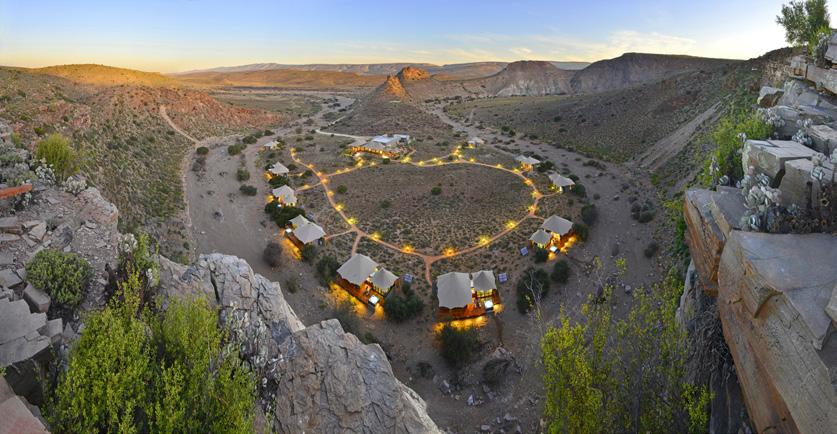

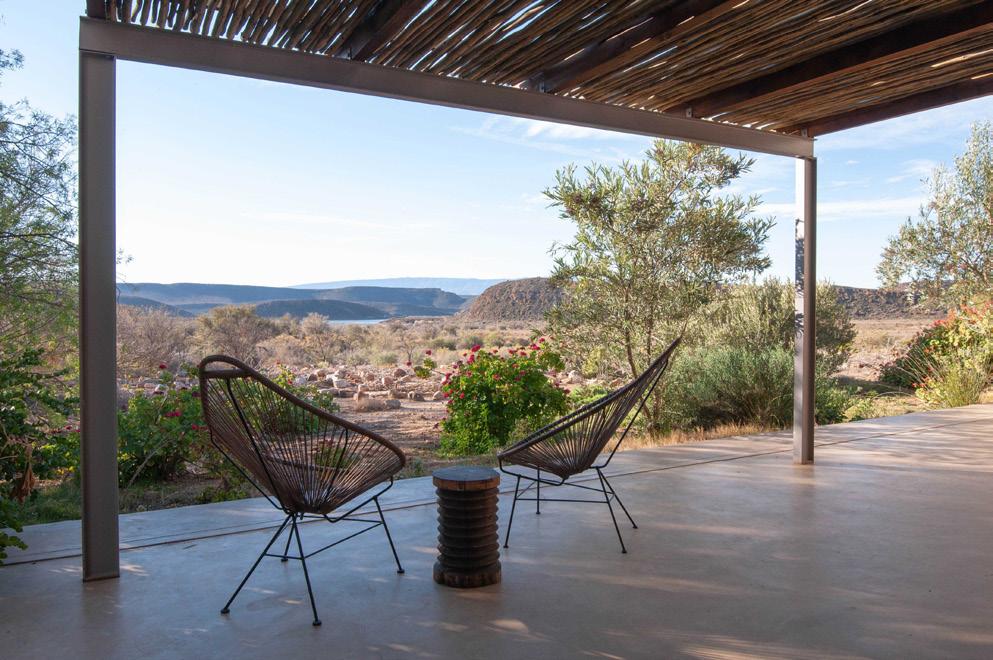


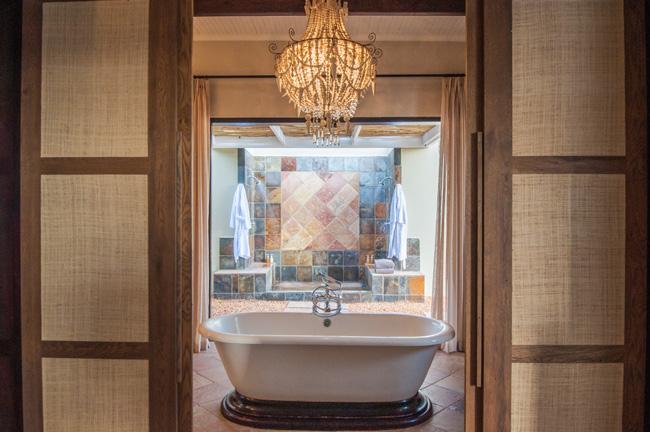


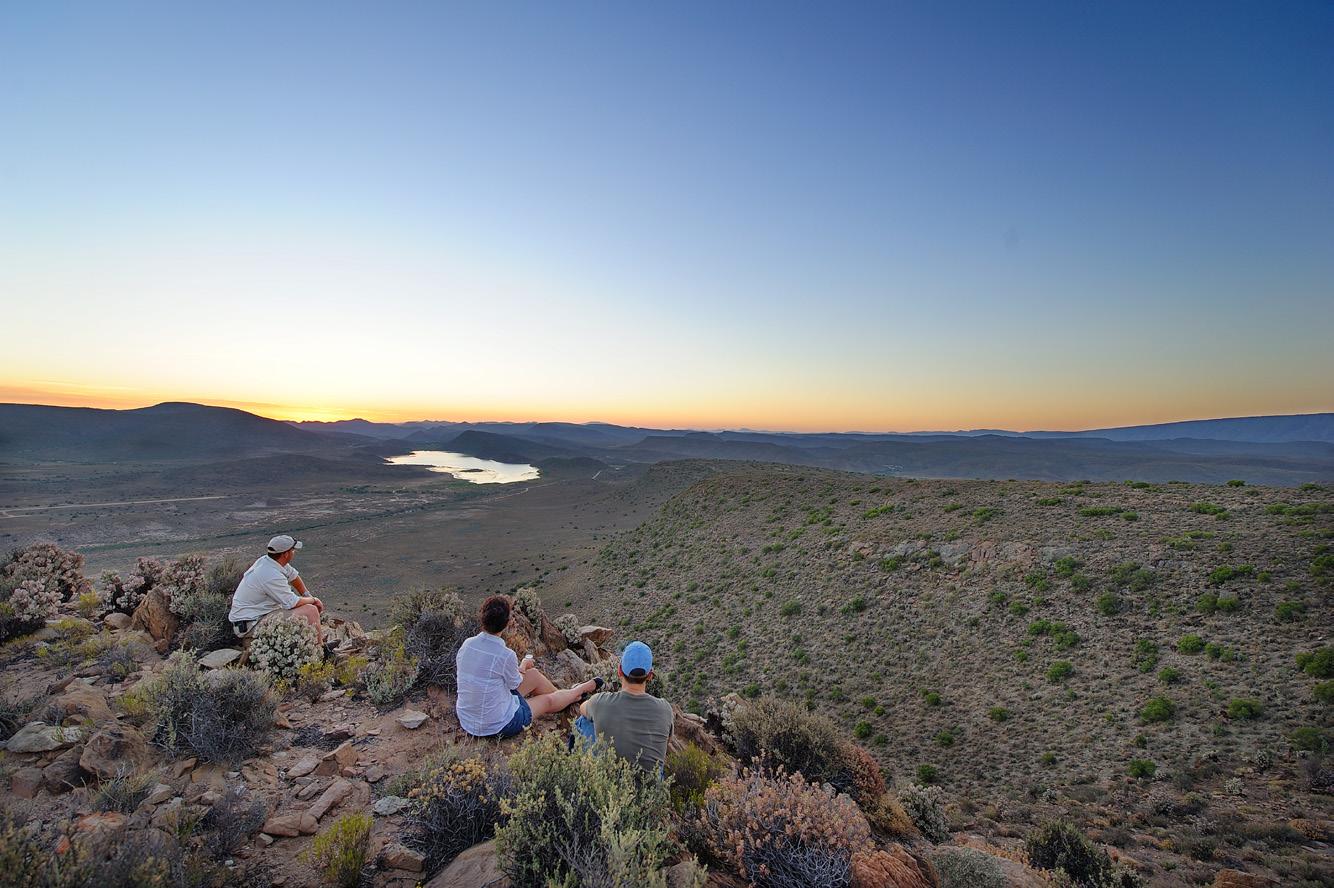



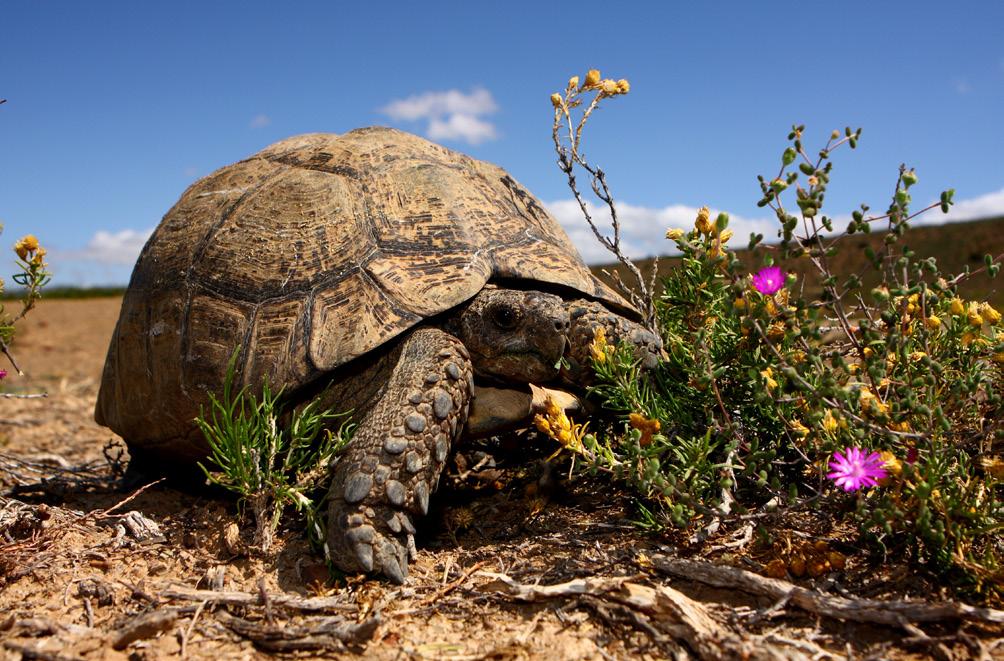

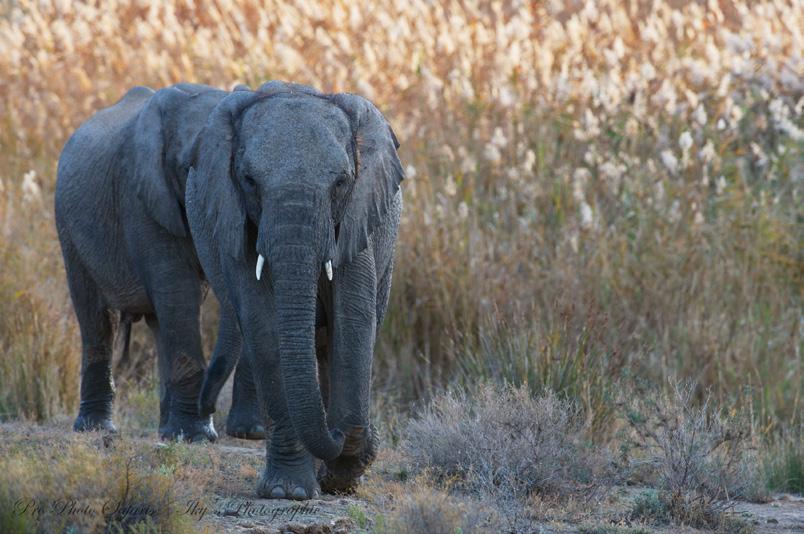







ACTIVITIES From one of the lodges, the interactive game drives which last up to three hours, take place at sunset and sunrise. Guests are guided by a game ranger in an open game viewing vehicle, locally employed and highly skilled the guides are fluent in the language of the land and are able to answer any questions guests may have. On game drives guests can enjoy a sundowner drink at sunset and a coffee or tea at sunrise.
GUIDED NATURE WALKS For those who prefer to hoof it, qualified walking guides allow guests to experience the region at a slower and more immersive pace. These walks are engaging and educational, providing an insight into how to track birds, insects and animals by spoor identification and reading the plants.
Sanbona is the first authentic free roaming BIG 5 wildlife reserve in the Western Cape and is one of South Africa’s largest privately-owned wildlife reserves. As such, it is home to a number of unique species that aren’t seen elsewhere, such as the critically endangered and highly elusive Riverine Rabbit and the second smallest butterfly in the world the Dwarf Blue. It also has 200 identified bird species and is an important raptor nesting place.
As both the game drives and the nature walks are through a protected wildlife reserve, no children under four are permitted on the drives and no children under sixteen are allowed on the walks. Also, it is advised that availability of both tours be checked as they are subject to availability of the qualified guides.
RELAXATION RETREATS Various treatments can be enjoyed at the relaxation retreats at Tilney Manor, Dwyka Tented Lodge and Gondwana Family Lodge. Treatments can be booked prior to arrival at the reservation and are the perfect way to get into the holiday, adventuring spirit. STARGAZING AND STORY TELLING Considered to have the best stargazing in Southern Africa, thanks to the complete lack of artificial light. The San, who are the native bushmen of the area, have many stories and legends about the stars. Involving gods and goddesses banished to the heavens and the skilful story tellers help these myths unfold before your eyes.
STAFF AND ACCOMMODATION There are three lodges across the reserve, offering different perspectives and accommodation. Gondwana Family Lodge has twelve rooms, Tilney Manor has six, Dwyka Tented Lodge has nine and the Explorer Camp has three safari tents. Across these there are 180 people employed and Paul says, “We employ locally whenever possible and this an important factor to developing the community which plays a crucial part in protecting this area.”
This forms part of the long-term plan of the CALEO Foundation which is the conservation and preservation of a vulnerable, sensitive land, its plants and the indigenous animals. Critical to this success is the involvement and development of the communities around the reserve, as is procuring, training and employing locally. “Also, this allows the education of the community, its children, our employees as well as guests about the purpose of this reserve,” he adds.
REHABILITATION For over two and a half centuries, the region has been and continues to be transformed by local and commercial agriculture, and so the significance of a nature reserve dedicated to protecting and conserving what remains cannot be overstated. Both the Fynbos Biome and the Succulent Karoo are globally recognized biodiversity hotspots but in addition to the farming, infrastructure in the form of fences, road networks, overgrazing and trampling have all left scars on the landscape.



These have led to erosion, invasive alien vegetation, change in vegetation structure and the destruction of micro habitats.
Rehabilitation of the semi-arid environments such as Sanbona is a slow process. However, with the groundwork laid and with constant monitoring of management actions and adaptation of conservation practices Sanbona’s revival is developing and it is doing so in a sustainable manner.
Rehabilitated to a more natural state it allows the reintroduction of animal species with the focus on those that are now rare and endangered. Paul explains that there is an important story to tell here. One of the wildlife and the indigenous people and telling it builds awareness of the need to conserve, for future generations, a heritage that is in danger of being lost forever.
“To achieve this goal the reserve rehabilitates and
restores degraded ecosystems through the use of sound conservation principles,” Paul says, “This maintains, restores and protects natural systems across various types of lands. It also helps replenish the number of indigenous animal species that further help promote the healthy function of an ecosystem.”
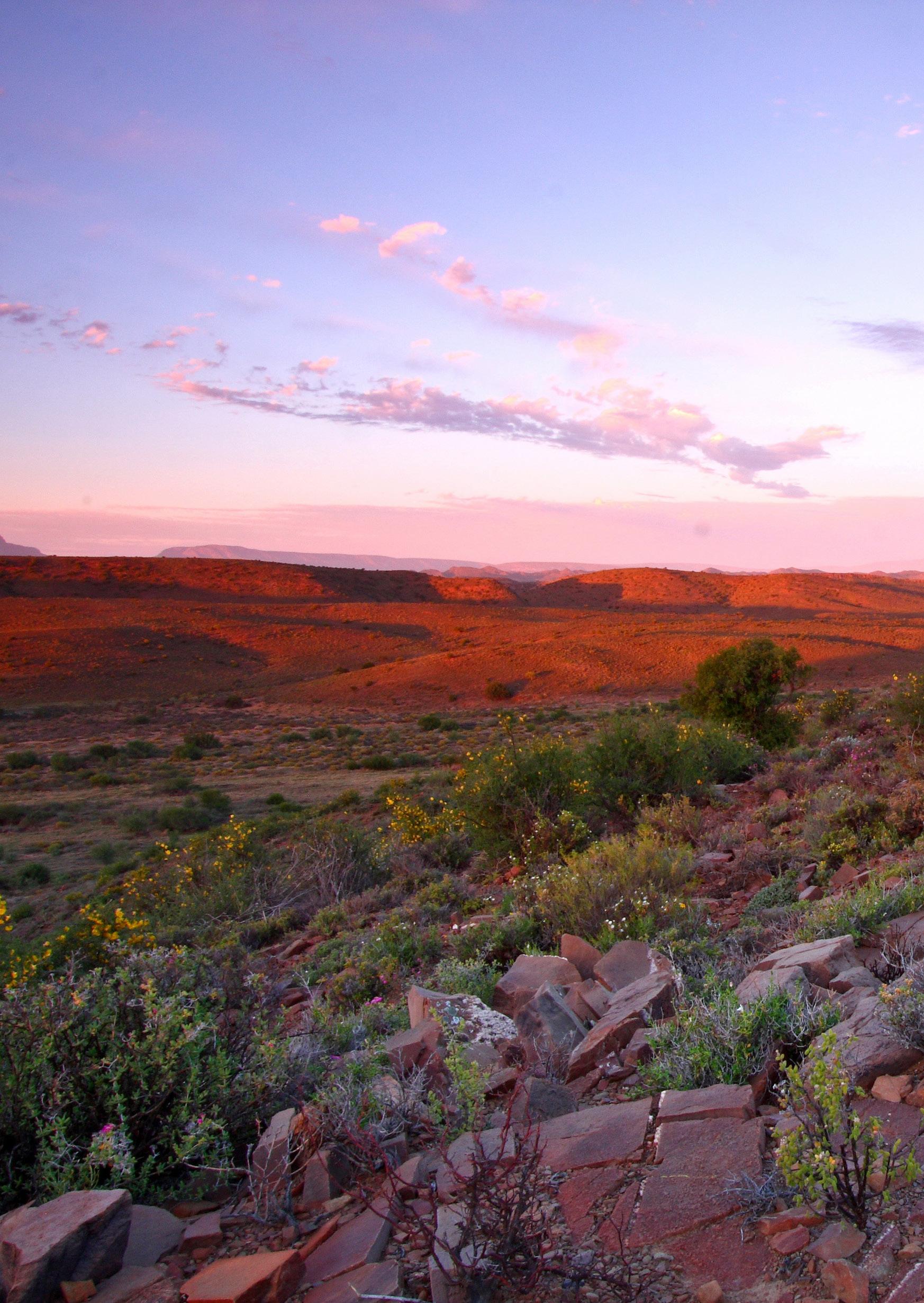
Furthermore, inspired by the success of what they have been doing so far, whenever it is possible, they will expand the amount of land which they can rehabilitate to further support these delicate environments.
THINGS TO KEEP IN MIND As Sanbona Wildlife Reserve is primarily focused on the preservation and protection of wildlife and vegetation there are some things to keep in mind. Apart from the guided tours mentioned earlier, they do not offer day trips and self-drive game drives are not permitted on the reserve either. Additionally, booking in advance to your stay is essential.
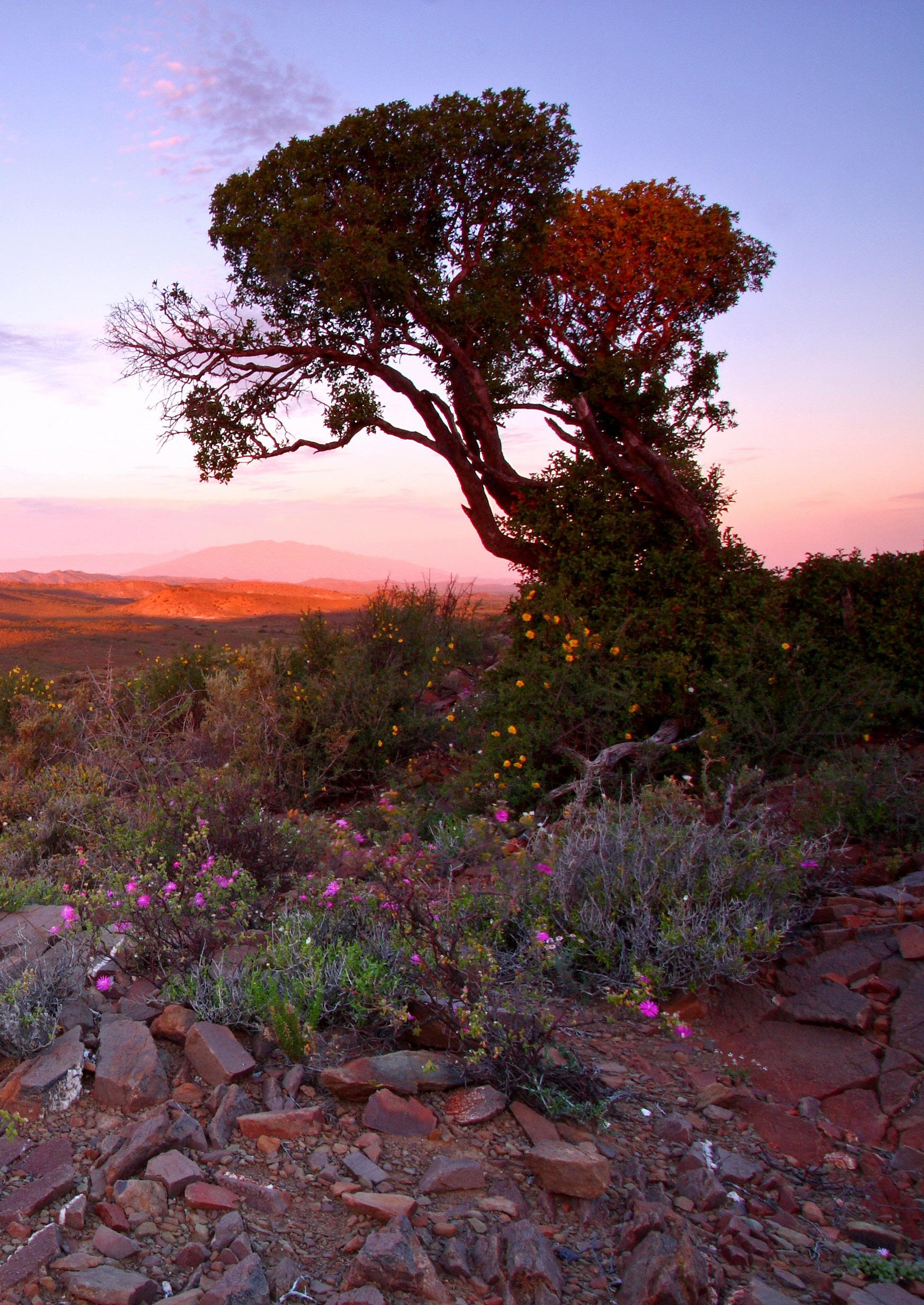
Guests are met at the Welcome Lounge, 15km in from the main gate and taken to the lodge in order to meet their specialist guide. A complimentary transfer from the lounge to the different lodges is available on request and must be booked at least 72 hours in advance. There is also secure parking available for vehicles at the Welcome Lounge for guests who travel to the reserve on their own. Game viewing is not affected by the weather, seasons, or time of year but you can consult with one of the safari experts before you make your booking if there’s something in particular you want to see.
It is also recommended you bring warmer clothing along for the trip as it may get cold. PRICE: Between ZAR9305pp sharing and ZAR12430pp sharing
COMPANY ADDRESS: Route 62, Between Montague and Barrydale TELEPHONE: +27 (0) 21 010 0028
EMAIL: reservations@sanbona.com WEBSITE: www.sanbona.com










